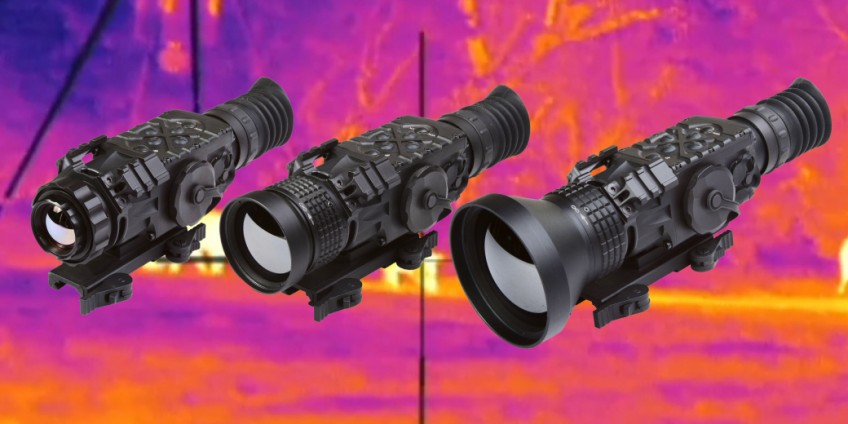Rifle Scopes: All You Need to Know
Shooters can customise their rifles with a variety of replaceable parts. In contrast, a rifle scope may make a tremendous difference in your accuracy. Right now, you’re shooting below your potential since you don’t have a sight on your rifle.
A scope’s glass optics let you see your target better. It’s more than that. It also includes an interior aiming point to help you determine the exact trajectory of your bullet.
Scopes have magnification powers ranging from 0 to 40X and even higher. With a scope mounted to your weapon, though, you wouldn’t go out and fire. For this reason, be sure the sight is suited for the kind of shooting you want to do before investing in one. What distinguishes these ten types of rifle scopes from each other is laid forth below.
Specific Targets
Rifle scopes with a fixed objective are some of the most basic options. Instead of being flexible, the magnification of a fixed scope is always the same. What you see is precisely what you’ll get. With a fixed sight, you can’t zoom in or out to acquire a better view of your target. Because of this, they are also not that expensive. It costs around $45 here in Australia.
Subject Matter
It is much easier to adjust the magnification level of a variable scope than a fixed scope. These scopes can be recognised using a series of integers. 5-20X56, as an example. The last value, 56, is the diameter of the objective lens. In this case, it has a diameter of 56 millimetres. Magnification is indicated by the first two numerals (5-20X). The magnification power of this scope ranges from 5X to 20X. Because the higher cost is somewhat more expensive than fixed scopes in Australia (around 60 dollars).
Night Vision Scope
If you do a lot of night hunting or shooting in dim light, you may want to consider a night vision scope. The scope has an infrared illuminator, which allows the user to see in low-light situations.
Long-Distance Experience
A wide variety of scopes, including competition and sniper, fall within the long-range group. Any scope with a magnification more than or equal to 10X is considered a long-range scope. In this category, you’ll find both fixed and adjustable long-range scopes.
Hunting Sights
Hunting scopes tend to be simpler than tactical scopes since tactical scopes are harder to get by. To last as long as possible, they must be very robust and weather-resistant.
Because most hunting takes place at shorter distances, most hunting scopes have a magnification of 20x or less. As a result, they aren’t always as flexible as one would expect them to be. For hunting, most people choose something simple and easy to use to concentrate on what they’re doing.
Hunting scopes’ primary job is to offer a clear, bright image no matter the weather conditions.
Scope for Competition
Competition scopes tend to have much higher magnification and a shorter lifespan than hunting. Tactical or hunting usage of these scopes is out of the question. Because of their size and flimsiness, they don’t provide as much light as other alternatives.
When participating in shooting sports, you’ll often be required to aim at very tiny targets from a distance. In this situation, it’s helpful to have a sizable competitive scope. Magnifications of up to 40X are possible with some of these scopes. You’ll need to prepare appropriately because they are so large and hefty compared to other scopes.
A Sniper’s Scope
They are supposed to use scopes with magnification, much like competition shooters. You’d be incorrect. When using low-powered optics, snipers typically use huge reticle displays to provide an abundance of helpful information. Military snipers use a fixed 10x scope, far less potent than the average civilian’s expectation. The mil-dot reticle is standard in these scopes because it gives the shooter a wealth of information about distances and windages, among other things. Fine adjustment turrets on sniper scopes allow the shooter to make modest yet precise changes.
Shooters without sniper scopes would have difficulty hitting their intended target. Experienced shooters who are acquainted with the intricacies of a sniper scope would benefit most from this add-on item.
Telescope for Scouting
Scout scopes, similar to tactical scopes in design, are often used by the military and hunters in remote areas. Deer hunters love their scout scopes.
The average magnifying power of 7X may be found on these scopes but can range anywhere from 2X to 8X, depending on the model. Typically just a few options are available, making them easy to use. Adjustable turrets may be seen on several scout scopes. This isn’t always the case, of course.




![HOW TO SOLVED THE [pii_email_980aedb69f943a5a4549] Error Code IN 2022?](https://www.themarketingguardian.com/wp-content/uploads/2020/09/pii_email_8dd6bcefcecdc6a73ef7--1280x720.jpg)
![How to Fix [pii_email_f1b15e330f3797803787] Error Code Step By Step Guide](https://dailymagazinenews.com/wp-content/uploads/2021/07/How-to-fixed-pii_email-Microsoft-Outlook-Error-2021.jpg)